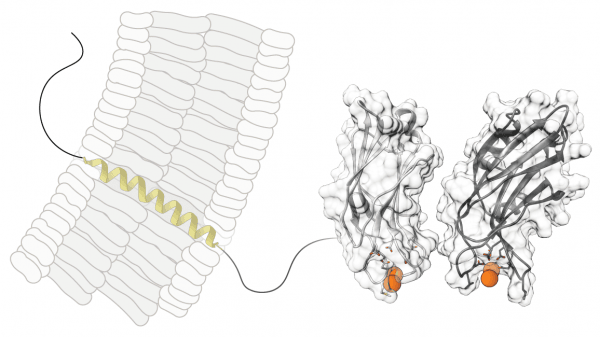Like people, neurons need to talk to one another. But instead of turning thoughts into words, these cells convert electrical signals into chemical ones. For nearly 30 years, biochemist Edwin Chapman has studied how one protein triggers this crucial conversion.
Now, his team has figured out how mutations in this protein, called synaptotagmin-1 or syt1, can lead to a rare condition known as syt1-associated neurodevelopmental disorder. The scientists’ discovery led them to identify a possible treatment, Chapman and his colleagues report May 1, 2020, in the journal Neuron.
An email prompted the team’s investigation. In 2015, Chapman, a Howard Hughes Medical Institute (HHMI) Investigator at the University of Wisconsin–Madison, received a message from the mother of a two-year-old girl who had learned to walk only with intensive physical therapy, and who could not yet speak or play like a typical child her age.
After testing her daughter, doctors told the mother that a mutation in the SYT1 gene could be the cause. The woman later introduced Chapman to another family who had a child with a similar disorder.
Read more at Howard Hughes Medical Institute
Image: The neural protein syt1 (left) grabs onto calcium (orange), triggering the release of chemicals that carry information between cells. Mutations in syt1 made it less responsive to calcium, researchers discovered. Credit: Bradberry et al./Neuron 2020


